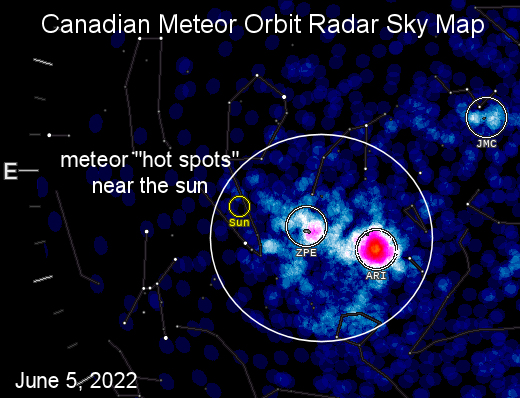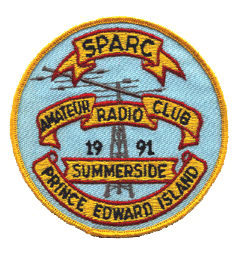DAYTIME METEOR SHOWER UNDERWAY: One of the strongest meteor showers of the year is underway. You might not notice, though, because of the glare. The Canadian Meteor Orbit Radar (CMOR) is picking up significant activity less than 20 degrees from the sun:

In the radar sky map, above, ARI stands for “Arietid meteor shower.” Its source is sungrazing Comet 96P/Machholz, which has laid down a trail of debris in the early-June portion of Earth’s orbit. When the shower peaks on June 7th, CMOR will detect approximately one Arietid every 20 seconds–a rate which ranks the Arietids among the top meteor showers of the year.
It turns out that June is the best month of the year for daytime meteor showers. When the Arietids subside, another daytime shower will take over: The zeta Perseids (ZPE) peak on June 13th. And then another: The beta Taurids on June 29th.
NOAA STI
:Product: Geophysical Alert Message wwv.txt
:Issued: 2022 Jun 06 0905 UTC
# Prepared by the US Dept. of Commerce, NOAA, Space Weather Prediction Center
#
# Geophysical Alert Message
#
Solar-terrestrial indices for 05 June follow.
Solar flux 99 and estimated planetary A-index 4.
The estimated planetary K-index at 0900 UTC on 06 June was 2.
No space weather storms were observed for the past 24 hours.
No space weather storms are predicted for the next 24 hours.
NOAA Alerts
Space Weather Message Code: SUMSUD
Serial Number: 237
Issue Time: 2022 Jun 06 1059 UTC
SUMMARY: Geomagnetic Sudden Impulse
Observed: 2022 Jun 06 1041 UTC
Deviation: 13 nT
Station: Fredericksburg
